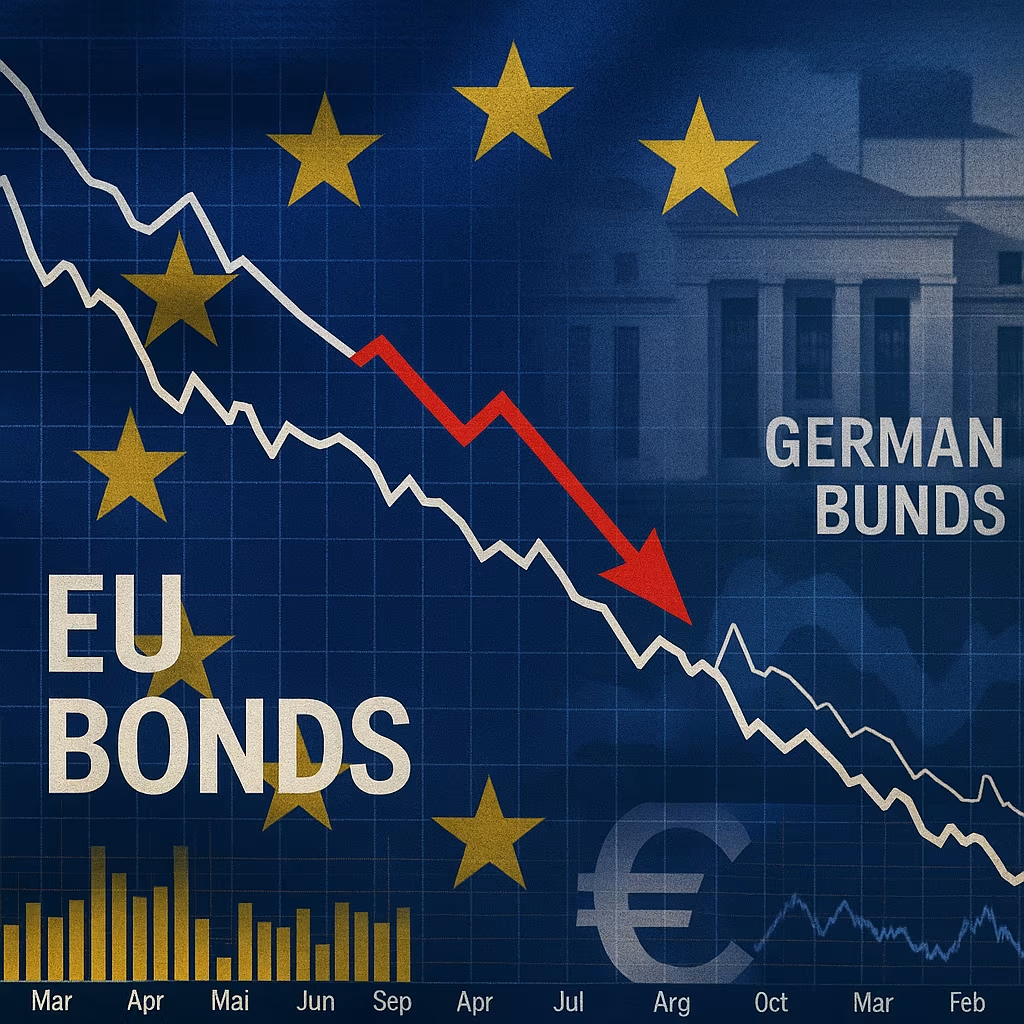The European Union’s ambitions to elevate its jointly issued debt instruments onto the same footing as national sovereign bonds have hit a major setback. Efforts to secure the inclusion of EU joint debt in a key sovereign bond index failed, dealing a blow to Brussels’ strategy of strengthening the bloc’s role in global capital markets. The decision underscores the ongoing challenges of convincing investors and index providers that EU-issued securities are equivalent to traditional sovereign benchmarks such as German Bunds, French OATs, or Italian BTPs.
A Push for Sovereign-Like Status
Since the launch of the EU’s pandemic recovery fund and related financing vehicles, Brussels has issued hundreds of billions of euros in common debt. The move was hailed as a historic step toward fiscal integration, providing member states with shared funding at favorable rates. Policymakers argued that these bonds should be treated by global investors as sovereign-grade instruments representing the full credit of the European Union.
Inclusion in a sovereign bond index would have been a symbolic and practical breakthrough. Such indexes guide trillions of dollars of institutional investor allocations, and sovereign classification could have attracted larger and more stable investment flows.
Why the Attempt Failed
Despite Brussels’ lobbying, index providers declined to reclassify EU joint debt. Analysts point to several reasons:
- Lack of fiscal union: Unlike national governments, the EU lacks full fiscal authority. Its borrowing depends on member states’ commitments, making repayment mechanisms more complex.
- Credit perception: While EU bonds enjoy strong ratings, some investors still view them as “supranational” rather than sovereign, placing them in a different risk category.
- Market liquidity: EU joint debt markets remain relatively young compared to the deep and liquid sovereign markets of member states. Index providers remain cautious about including them without a longer performance track record.
Investor Implications
The failure to include EU debt in a sovereign index means that many institutional investors will continue to treat the securities as a niche allocation rather than a core holding. Pension funds, central banks, and asset managers that benchmark against sovereign indexes will not be compelled to increase exposure, limiting the growth of secondary market liquidity.
That said, investor demand for EU bonds has remained solid, particularly among those seeking high-quality assets with environmental or social credentials. The EU has positioned a large portion of its joint debt as green and sustainable, appealing to ESG-focused investors.
Political and Economic Ramifications
For Brussels, the setback is more than technical—it strikes at the heart of its efforts to deepen financial integration and establish the EU as a stronger force in global markets. Officials had hoped sovereign index inclusion would reinforce the euro’s role as a reserve currency, making EU debt a more attractive holding for global central banks.
The failure also reflects broader tensions within the bloc. While some member states support deeper fiscal integration, others remain reluctant to blur the lines between national and supranational obligations. Without stronger political consensus, EU joint debt may continue to face classification challenges.
The Future of EU Joint Debt
Despite the setback, the EU is unlikely to abandon its joint debt ambitions. The pandemic recovery fund and related financing schemes have created a new precedent, demonstrating that member states can collectively back large-scale borrowing. Policymakers may now focus on building deeper liquidity, extending issuance programs, and demonstrating repayment reliability to strengthen the case for future index inclusion.
Over time, as the volume of EU-issued debt grows and secondary markets mature, the argument for sovereign-like treatment could gain traction. The EU may also explore lobbying for the creation of new blended categories that reflect the unique structure of its obligations.
Market Context: Rising Debt Pressures
The debate comes against the backdrop of rising debt across Europe. National governments are grappling with post-pandemic spending obligations, higher borrowing costs, and new fiscal rules designed to ensure stability. In this environment, joint borrowing remains a politically sensitive but potentially valuable tool.
However, the reluctance of index providers to grant sovereign status suggests that markets will continue to differentiate between joint EU debt and national bonds. For now, German Bunds remain the benchmark for risk-free assets in Europe, while EU bonds occupy a growing but secondary role.
Conclusion: A Setback, Not the End
The EU’s failure to secure sovereign index inclusion for its joint debt highlights the long road ahead in transforming shared borrowing into a core component of global capital markets. While the setback is significant, it does not diminish the importance of EU bonds as a financing tool or their growing appeal among ESG and high-grade investors.
For Brussels, the task now is to build credibility over time—expanding issuance, demonstrating fiscal reliability, and working toward greater political consensus. Only then can the EU hope to achieve the symbolic and practical victory of having its joint debt recognized on par with the world’s sovereign benchmarks.





